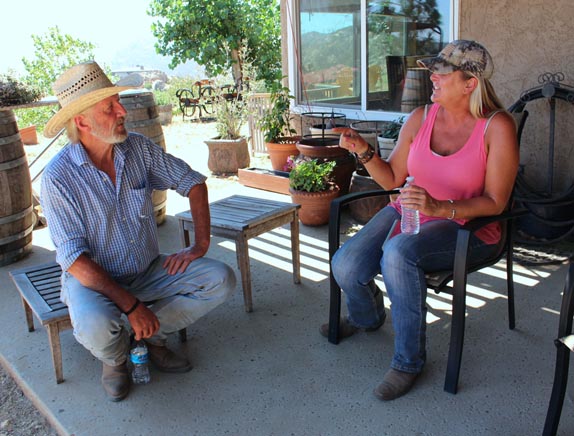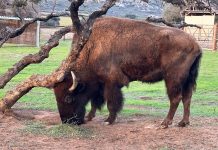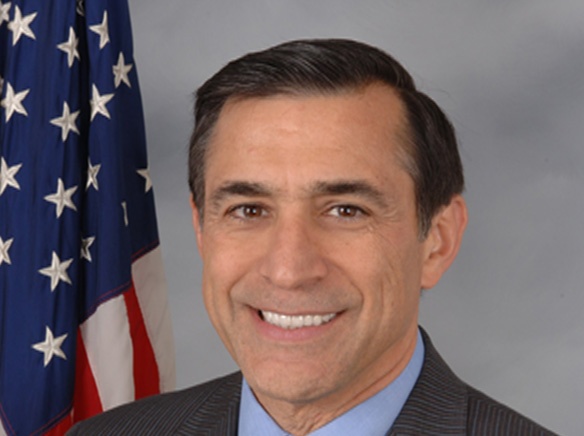Saddles in Service CEO Tammy Oluvic stands on the porch of Storm Son’s ranch as she explains the background of her organization, a recovery program for veterans who have both diagnosed and undiagnosed physical and mental health concerns and benefit from being physically and emotionally present with horses.
In 2016, she and her husband Mike Oluvic purchased Storm Son’s ranch following his naval retirement. On a whim, Tammy Oluvic adopted two horses from the Bonita shelter, then noticed the positive emotional impact that the horses had on her husband over subsequent months.
She developed that unforeseen start into the Saddles in Service non-profit which has since seen 200 riders with varying degrees of horse sense pass through the gates of Storm Son’s ranch.
The facility provides outreach to service members, police officers, first responders and members of the United States Forest Service. Oluvic refers to the majority of the riders who come to the facility as “heroes”; they may have some experience with horses but are essentially untrained. There are also 12 “wranglers”, regulars at the ranch who are just as emotionally in need of support but happen to come with a high level of horsemanship.
The program has been kept free for participants, however Oluvic has been seeking out grant-based funding. The facility recently received a $20,000 Disabled Veterans National Foundation grant specifically to work on infrastructure updates, including better access to the horse pens and arena.
As Oluvic shared success stories about their work, Director of Program Development and Horse Trainer David Vikander casually walked across the porch, took a seat on a low, wooden table and added to Oluvic’s patter with interjected comments here and there.
“The horses do the healing, we just facilitate it,” Vikander says.
There are now more than a dozen horses at the facility, all locally rescued; many have been through some amount of rehabilitation of their own.
Tequila, who was rescued shortly before being sent to slaughter auction, arrived at the ranch nearly crippled. The Saddles in Service team has spent many hours reworking his feet with a farrier to success; the once-timid horse now slowly approaches the rail to interact with a stranger.
Oluvic doesn’t specifically say that the rescued horse is symbolic of the ranch, but Vikander slides in an observation that could refer to either the horses or the riders: “Miracles happen here everyday and we never get used to them.”
The program is currently in a peer-reviewed study assembled by Dr. Ellen Kaye Gehrke and Dr. Michael Myers through National University. According to Dr. Gehrke, the 8-week program at Saddles in Service is part of a larger research study to determine the psycho-physiological impact of equine facilitated experiences on Veterans diagnosed with PTSD.
Vikander says that working with the horses helps participants breath free again.
Facilitators involved with the study measure heart rate variability and respiration rate of six participants at a time, at regular intervals: first, upon arrival at the ranch, then again after a brief question-and-answer session, once more after light walking with a horse, and a final time after they have finished a full session of walking and riding bareback with their horse.
Vikander and Oluvic agree that part of the reason they see success at Saddles in Service is because they have participants interact with a horse and take a slow walk before moving on to riding time. When heroes ride, it is bareback and demands a combination of physical and emotional interaction.
They also suspect that the relatively loose structure of the program contributes to self-driven healing.
“Everything is at their own speed, its ongoing. We do have certain time constraints and obligations but if someone is in need and they call us, we’re going to try and make it work. I have also seen many people who say that they are just here to volunteer and then their personal need comes out later on, after they’ve established a sense of trust,” Oluvic said.
Vikander follows up Oluvic’s statement:
“When someone is around a horse, he is the person he was before. You have to be in the present, or the horse won’t respond. They can’t be anything but who they are.”
HORSES, HEROES AND HEALING
Tammy Oluvic, CEO and founder of Saddles in Service, brings horses and veterans together.














